How To Use CLR On Rust (5 Simple Tips)
-

- Last updated:
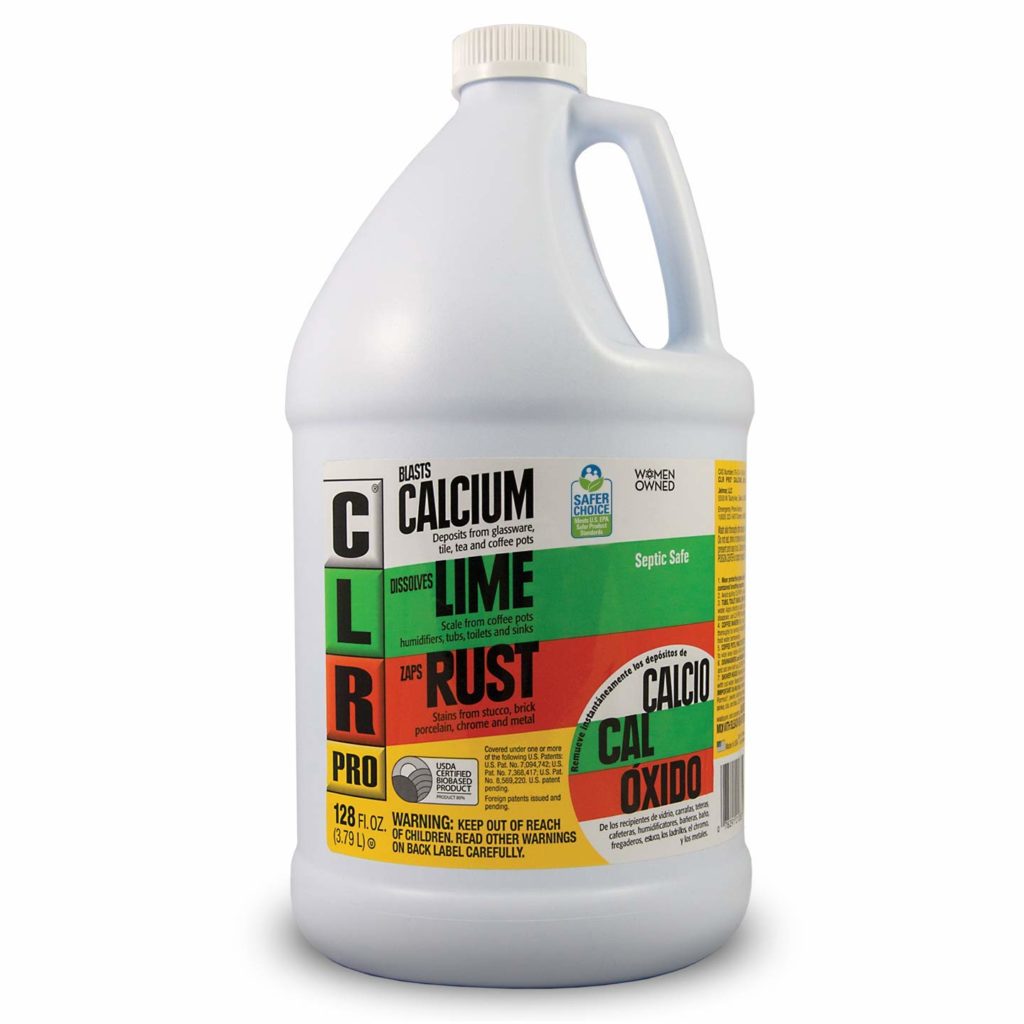
In chemistry, rust is commonly referred to as iron oxide. Meaning, for it to occur, there has to be oxygen, iron, and more importantly, moisture. The reaction between these elements is not instantaneous, but gradual. That’s to say, you have to leave the metal exposed for a considerably long period of time before it starts exuding any signs of corrosion.
Is it possible to remove rust stains from concrete, fiberglass, piece of clothing, or any other surface affected by using it? Absolutely!
In this post, we’ll be focusing on CLR stain remover. By the time we’re done sharing our CLR rust cleaning tips, you’ll know how to effectively apply it, and what not to do.
What Is CLR?
Calcium Lime Rust, popularly known as CLR is a common cleaning product in most households. Some of the ingredients used in the production of this stain remover are mostly compounds such as citric acid, disodium capryloamphodipropionate, lactic acid, propylene glycol, sulfamic acid, water, and several others.
Lactic acid happens to be the main ingredient, as it accounts for a significant percentage of the total volume and weight. They used to add phosphoric acid in the past but had to find an alternative when they realized that it adversely affected users.
There are different variants of the CLR stain remover because they are all designed to be applied on specific surfaces. For example, if you’d like to remove stains from a concrete surface, you’ll go for one that’s powerful enough to get the job done.
Nevertheless, all CLR stain removers have acids that have the requisite strength to dissolve rust and calcium from any type of surface, without causing irreversible damage. For the sake of illustration, let’s assume that you’re trying to remove rust stains from a patio or a concrete driveway. These are some of the tips that we would apply.
The 5 Tips On How to Apply CLR Stain Remover
1. Use Proper Safety Equipment
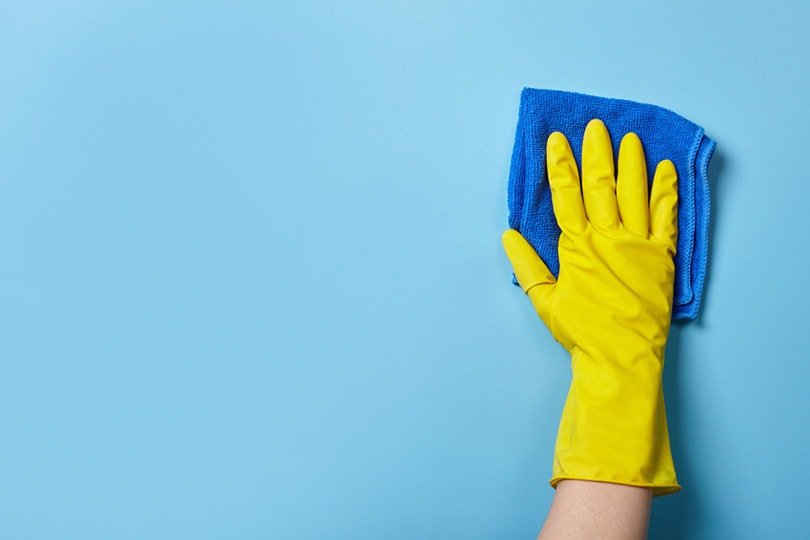
Prioritize your safety anytime you’re cleaning rust off of any type of surface while using an acid solution. Always wear a chemical-resistant apron, gloves, and goggles. They’ve been designed to protect your skin and eyes from the corrosive nature of acid. Wearing a mask is mandatory, as well. You have to wear it, or you’ll be exposed to respiratory tract irritation that could lead to asphyxia, laryngeal spasm, or laryngeal edema.
2. Conduct a Spot Test
Just because the CLR stain remover is one of the most recommended stain removers doesn’t mean that it can’t worsen the situation. It could, and that’s why it’s important to do a spot test. But you must test it on a spot that’s relatively out of sight. Go ahead and apply a small amount on that section, give it 2 to 3 minutes to settle, scrub, and then hose it down. If there are no stain residuals left behind, move on to the affected section.
3. Apply CLR Stain Remover
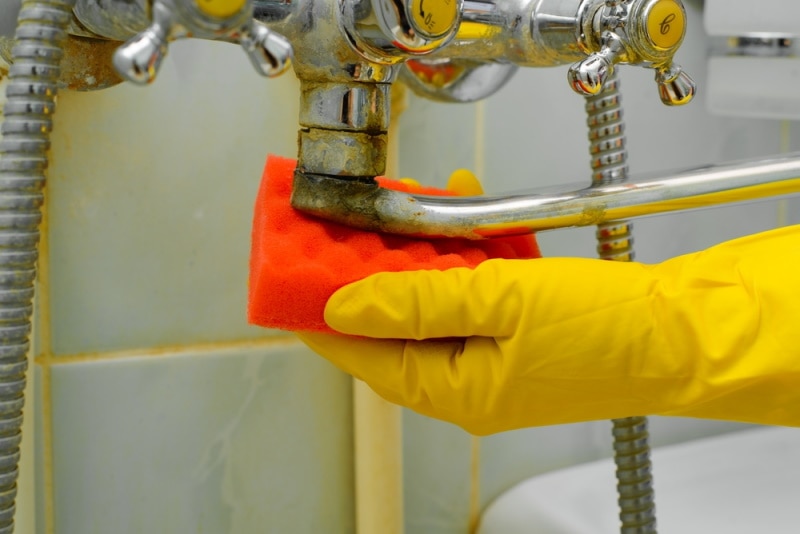
The directions on how to apply your specific stain remover will be written on the product package. They are clear and very simple to understand. In the case of the concrete stain remover, all you have to do is to directly apply it on the affected spot and give it time to soak. The waiting period will depend on how severe the stain is. If it’s a moderate situation, you only need to give it 2 to 5 minutes. But if it’s severe, 10 minutes will suffice.
4. Scrubbing & Rinsing
The good thing about concrete is that it’s often resilient, strong, and highly resistant to scratches. That means you really don’t have to worry about damaging your driveway by scrubbing too hard. Just don’t overdo it, because the phrase “highly resistant” doesn’t imply that it’s completely invulnerable to scratches.
For this part, you’ll need a hard-bristled brush. Once you’re done scrubbing, connect the hose to a cold-water source and then rinse everything away.
5. Repeat the Process
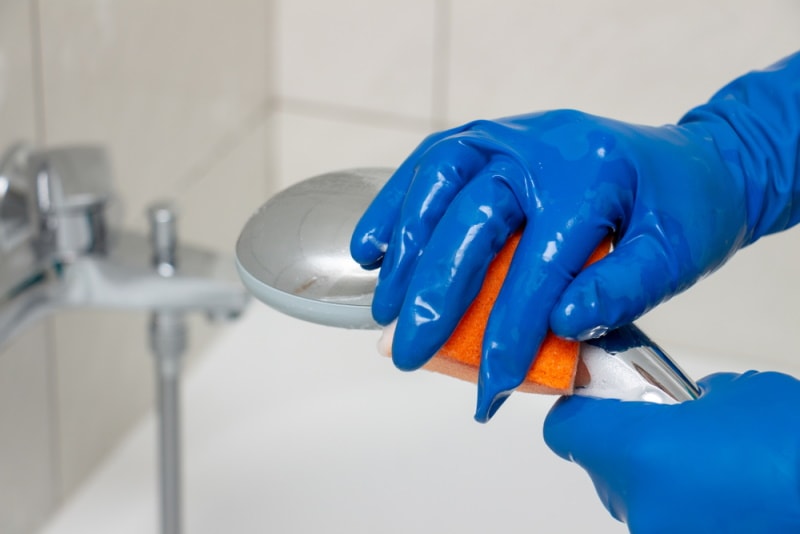
Repeating the process will only be necessary if you didn’t successfully remove all of the stains. Apply the CLR a second time, give it 10 minutes max to settle, scrub for a few minutes, and then rinse.
What Are the Benefits of Using the CLR Stain Remover?
Eco-friendly
When you go through the list of ingredients used to produce the CLR stain remover, you’ll quickly take note of the fact that they are almost all toxic to humans. However, if you compare those same ingredients to those used in the production of other cleaning products, you’ll realize that the CLR’s toxicity levels are mild.
While designing the CLR, manufacturers made sure that the ingredients nullified each other’s toxic effects, thus making the final product non-toxic to humans. They also drew the chemicals from vegetables, instead of sourcing some from phosphates, bleach, or ammonia.
It’s also worth mentioning that CLR stain remover is biodegradable, ad very soluble in water. So, if you’re passionate about conserving our planet, you’ll be glad to know that you’ll be applying a product that doesn’t harm the environment
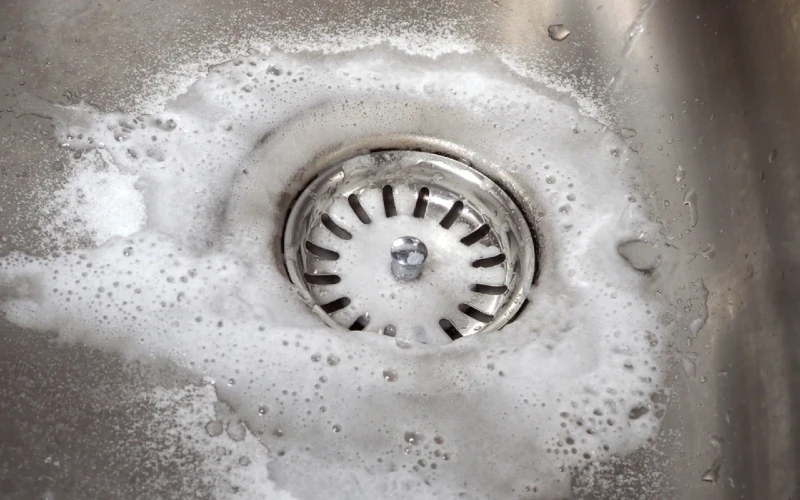
Budget-Friendly
If the conversation is about money, then this is an affordable option. We’ve used this product long enough to know it doesn’t cost more than $10, regardless of where you’re buying it. That’s an equivalent of around $1.14 per 100 ml.
Effective & Works Fast
You’ll be able to completely remove your stain in 10 minutes tops. And that’s only if the stain in question is a severe one. In moderate situations, it only takes 5 minutes or less for the solution to dissolve the rust.
What’s the Downside of Using CLR?
Safety Concerns
You have to store your CLR stain removers away from kids, especially toddlers who like to put everything in their mouths. This remover can cause oral burns, vomiting, and stomach upsets. As a user, watch out for prolonged exposure. Natural or not, it could still cause eye, skin, and tract irritation.

Possible Staining
The CLR stain remover is not applicable in all situations. That’s why you’re always reminded to do a spot test before trying to clean the affected area. Some of its ingredients are also known to react with some concrete, especially those that contain calcium. Once applied, it will slowly dissolve the calcium in it, causing the surface to break down.
CLR Mistakes to Avoid
- Applying CLR In Unventilated Spaces
Don’t forget the fact that CLR is a product made using chemical ingredients. And even though those ingredients are naturally occurring, toxicologists usually like to quote Paracelsus, just to remind us that “All Things are poison, and nothing is without poison.”
So, it’s best to work in a well-ventilated space. Obviously, this isn’t something to worry about if you’re cleaning the driveway. But if you’re removing stains indoors, make sure all the windows and doors are open.
- Not Spot Testing the Remover
CLR is acidic in nature. These types of products can easily damage any type of surface when applied without caution. Read the instruction page first, to figure out if there’s a disclaimer such as “Not to Be Used on Carpets, Calcium Concrete, Or Coated Surface.”
You’re still advised to spot test, even if you think the stained surface doesn’t react with the remover.
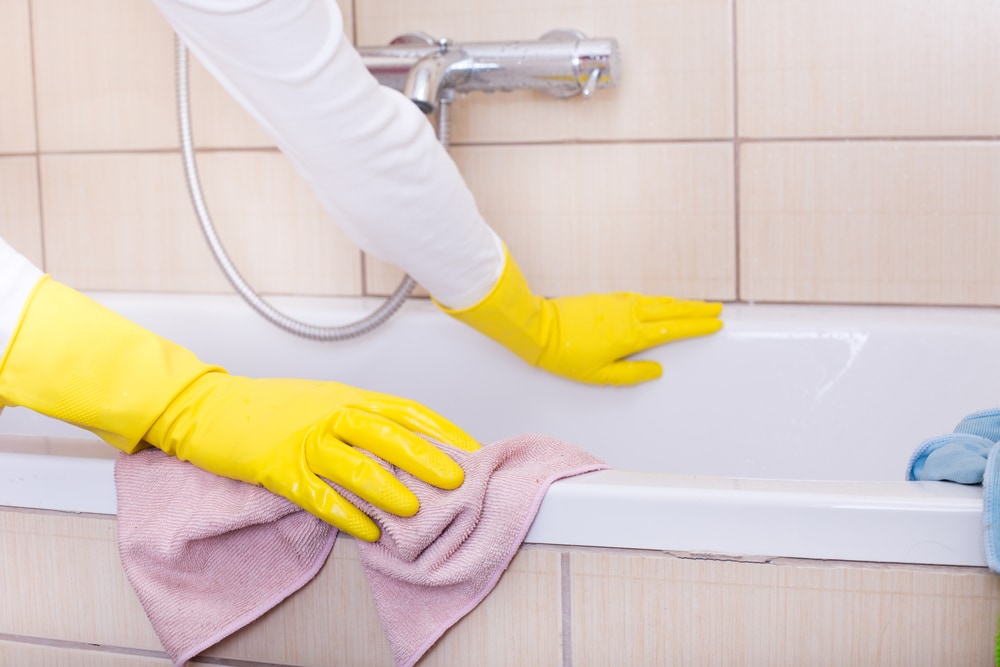
- Don’t Leave the CLR Remover on the Affected Area for More Than 10 Minutes
The acidity that gives it the strength to get rid of severe stains is actually the reason why we don’t leave CLR on surfaces for an extended duration. It will easily corrode the surface, and before you know it, the damage is irreversible.
- Don’t Apply Undiluted CLR or Apply It Using a Spray Bottle
Accidents happen all the time. Some are avoidable, while others aren’t. We often like to dilute CLR with water to reduce the acidity, such that in the event it comes into contact with your skin, the burn doesn’t end up being so serious.
We are against spray bottles because the solution has always been treated as an inhalation hazard. If you’re going to apply it, use a scrubbing brush or sponge—anything that doesn’t spread the solution in the air is okay.
Conclusion
We’ll wrap this up by recapping. First off, the CLR is a heavy-duty remover designed to help users get rid of any unsightly rust stain, without damaging the surface. However, you must be careful while applying it, as it can cause skin, eye, and respiratory tract irritations. Secondly, it’s biodegradable. Meaning, it’s safer for the environment.
We hope these tips have helped you safely apply CLR to remove rust!
Contents

